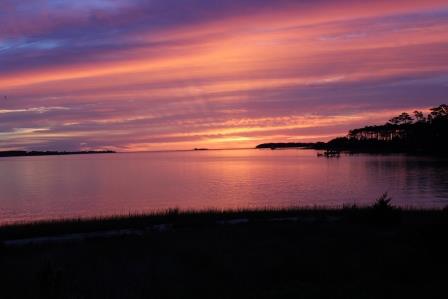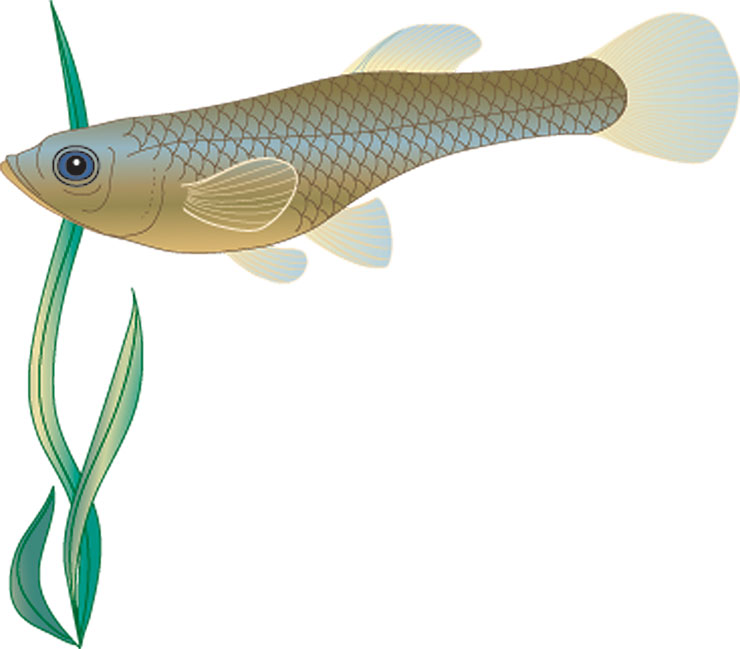SEA SCIENCE: Science for the Sea and Shore: North Carolina Sea Grant Announces New Research Projects

North Carolina Sea Grant has selected a dozen new core research projects for the 2012 to 2014 funding period.
These studies will enable scientists to learn more about our coast and its inhabitants — on land and in the sea — and improve the overall understanding of pressing coastal issues.
“Some of this research uses cutting-edge technologies to learn more about the genetic diversity of herring and the makeup of the Neuse River phytoplankton assemblage. More traditional methods will look at wastewater treatment, managing coastal erosion and the transport of eroded material. Other projects will study fish populations and aquaculture, and oysters and oyster reef restoration,” says Steve Rebach, Sea Grant’s associate director.
The funded research represents all four of Sea Grant’s major focus areas: Healthy Coastal Ecosystems, Hazard Resilience in coastal Communities, Sustainable Coastal Development, and Safe and Sustainable Seafood Supply. Most of these projects also support graduate students, helping to build North Carolina’s next generation of scientists.
The researchers receive a combination of support from the National Oceanic and Atmospheric Administration’s National Sea Grant College Program and matching dollars from the institutions receiving the funding.
“The 2012–2014 Omnibus will fund eight universities in North Carolina, from Appalachian State University in the west and North Carolina Central University in the piedmont to the University of North Carolina Wilmington on the coast,” Rebach notes.
In addition to collaborating with colleagues from within the state, North Carolina researchers will partner with scientists from South Carolina and Massachusetts, and from agencies such as the U.S. Geological Survey, South Carolina Department of Natural Resources and N.C. National Estuarine Research Reserve.
Since 1970, Sea Grant has been a source for research, education and outreach opportunities for current issues affecting the state’s coast and its communities. One of 32 programs in the country, North Carolina Sea Grant strives to be a valuable resource for scientists, educators, local officials, government agencies, coastal businesses and the public to find unbiased, scientifically sound information about the state’s coastal ecosystems.
Sea Grant also manages a mini-grant program that provides rapid-response, seed and starter support from federal funds for small projects, typically costing less than $5,000. The results of Sea Grant-funded research are disseminated to agencies, communities, businesses and the general public through its extension, education and communication activities.
The new core research projects are as follows:
HEALTHY COASTAL ECOSYSTEMS
• Are Fish Productivity Metrics Related to Anthropogenic Alterations of Habitat?
Jeffrey Buckel and Joseph Hightower, North Carolina State University; and Benjamin Letcher, U.S. Geological Survey Massachusetts.
This project will estimate the rates of growth, survival, abundance and production of mummichog (Fundulus heteroclitus), a small fish that lives in estuarine waters, using Passive Integrated Transponder (PIT) tags, traditional sampling and autonomous tag detection systems. Researchers will compare PIT tag-derived estimates of survival with estimates using traditional methods. They propose to relate the growth, survival and production of this species to habitat alteration and the presence of competitor species in six North Carolina estuarine marsh creeks.
• Metapopulation Dynamics Guides Oyster Restoration and Shell Budgets in North Carolina
David Eggleston, NC State; and Amy Ringwood, University of North Carolina at Charlotte.
This inter-institutional effort is designed to quantify variations in oyster recruitment, growth, survival and health at cultch-planting sites and natural reefs in Pamlico Sound. The researchers plan to combine these results with a previous Sea Grant-funded study to identify the source of larval subsidies. They also will use the data to optimize site-specific harvest strategies in cultch-planting sites.
• A Metatranscriptomic Survey of the Eukaryotic Plankton Community Along the Freshwater-Marine Continuum in the Neuse River Estuary
Adrian Marchetti and Hans Paerl, University of North Carolina at Chapel Hill.
The Neuse River Estuary has experienced extensive nutrient loading over the past 50 years, resulting in a deterioration of water quality. Most monitoring efforts focus on physical and chemical measurements. The researchers will use transcriptome analysis at the molecular level to survey a specific phytoplankton assemblage, known as eukaryotic, along the estuary’s saline spectrum. They will explore the usefulness of integrating the novel technique into existing water-quality monitoring programs to increase detection of potential harmful algal bloom species.
• Examining the Source and Transport of Land-Derived Material Impacting North Carolina Coastal Waters: An Integrated Approach Using Remote Sensing, Fluorescence Spectroscopy and Geochemical Analysis
Richard Miller, East Carolina University; Brent McKee, UNC-CH; and Christopher Buonassissi, ECU.
This project will study the transport, composition and source of dissolved and particulate material in the Pamlico Sound from the Neuse and Tar-Pamlico rivers. The scientists want to determine which land-cover and land-use practices generate such matter. They also will study how local floods and rain events affect the movement of the material to coastal waters. This baseline data will allow the researchers to assess potential changes in watershed-based land-cover and land-use practices.
• Building Ocean and Environmental Literacy Among North Carolina’s K-12 Students; a Project in Conjunction with the North Carolina Environmental Literacy Plan
Markus Nils Peterson, NC State; Laurell Malone, North Carolina Central University; and Susan Moore and Renee Strnad, NC State.
This team will create an assessment tool to gather and analyze baseline data on ocean literacy in North Carolina schools. The work will consider the links between outdoor education, ocean stewardship and environmental literacy. The results and assessment tools will be made available to Sea Grant, state officials, educators and interest groups, as well as other states working on environmental literacy plans. This could be the first step toward an improved curriculum that would teach students to become better stewards of the environment as adults.
• Quantifying Oyster Reef Accretion Rates and Structural Evolution for Improving Estimates of Carbon Sequestration and Restoration Success
Antonio Rodriguez and Joel Fodrie, UNC-CH; and John Fear, N.C. National Estuarine Research Reserve.
This project seeks to improve intertidal oyster reef restoration in North Carolina and nationally by quantifying reef accretion rates and cataloging internal reef composition — from initial colonization to maturity. Such critical information about oyster reef growth can help predict the sustainability of the fishery, as well as the habitat and filtration services the reef structure provides. Results will provide benchmarks of reef growth, guide selection of restoration sites, and provide an accurate measure of oyster reef sustainability with potential increased rates of sea level rise.
• Application of Genetic Markers to Inform River Herring Management
Tom Schultz and Eric Palkovacs, Duke University; and Anthony Overton, ECU.
River herring have been an economically and culturally important species in several coastal North Carolina communities. The researchers will examine genetic diversity within and among river herring (Alosa pseudoharengus and Alosa aestivalis) populations in North Carolina. The information can help scientists and fishery management officials understand the current status of populations and the threats to recovery.
HAZARD RESILIENCE IN COASTAL COMMUNITIES
• Vulnerability of Coastal Sewage Collection Systems to Inundation
Lawrence Cahoon, UNC Wilmington.
This study will focus on central wastewater treatment systems in North Carolina’s coastal counties and analyze sewer flow as functions of rainfall patterns, temperature and sea level, as well as the effects of extra flow on collection systems. The project will evaluate how sewer flow is affected by variations in sea level and elevation.
SUSTAINABLE COASTAL DEVELOPMENT
• Economic Values of Coastal Erosion Management
Craig Landry, ECU; and John Whitehead, Appalachian State University.
The researchers will measure public support for, and individual economic values of, coastal erosion control, such as beach replenishment, shoreline armoring or coastal retreat. They also will evaluate the impact of erosion-control policies and resulting beach conditions on recreation and tourist behavior. They will assess overall support for various approaches to coastal erosion management, the impact on recreation and tourism patterns, and the benefits and costs engendered by the approaches.
SAFE AND SUSTAINABLE SEAFOOD SUPPLY
• Optimization of Ions for Low-Salinity Culture of Southern Flounder with Emphasis on Reduction of Sodium Chloride in Recirculating Aquaculture Systems
Harry Daniels and Russell Borski, NC State; and Wade Watanabe, UNCW.
The presence of sodium chloride in saltwater discharge from marine aquaculture facilities presents a challenge when attempting to recycle the water. This project seeks to optimize conditions for survival and growth of southern flounder in low salinity. Sodium and chloride ions will be added independently to ion-poor water to isolate the effects of each. The project also will estimate the optimal calcium levels for growout of southern flounder.
• A Comprehensive Evaluation of Biological and Ecological Factors Influencing the Sustainable Management of Large Pelagic Fishes in North Carolina Waters
Frederick Scharf and Michelle Staudinger, UNCW.
This study seeks to improve the understanding of relationships among large pelagic predators — such as billfish, tuna, wahoo and dolphinfish — and their prey. In addition, the researchers will determine how seasonal and regional shifts in prey availability influence reproductive output of the predators.
• Managing Reproductive Failure in Fisheries and on Fish Farms: A Joint North Carolina/South Carolina Sea Grant Project
Craig Sullivan and Benjamin Reading, NC State; and Robert Chapman, South Carolina Department of Natural Resources.
The researchers intend to identify the genetic basis for low egg quality in farmed striped bass, in addition to the specific gene networks and physiological functions that are impaired. This information could lead to changes in husbandry/breeding practices to overcome egg quality issues. The potential application to wild striped bass populations also will be evaluated to improve fishery management practices.
Hybrid striped bass aquaculture has become a multimillion-dollar industry in the state over the past 15 years, based on Sea Grant-sponsored research.
This article was published in the Spring 2012 issue of Coastwatch.
For contact information and reprint requests, visit ncseagrant.ncsu.edu/coastwatch/contact/.
- Categories:


